A Permanent Split Capacitor (PSC) motor is a type of single-phase induction motor commonly used in various applications such as fans, blowers, pumps, and other machinery.
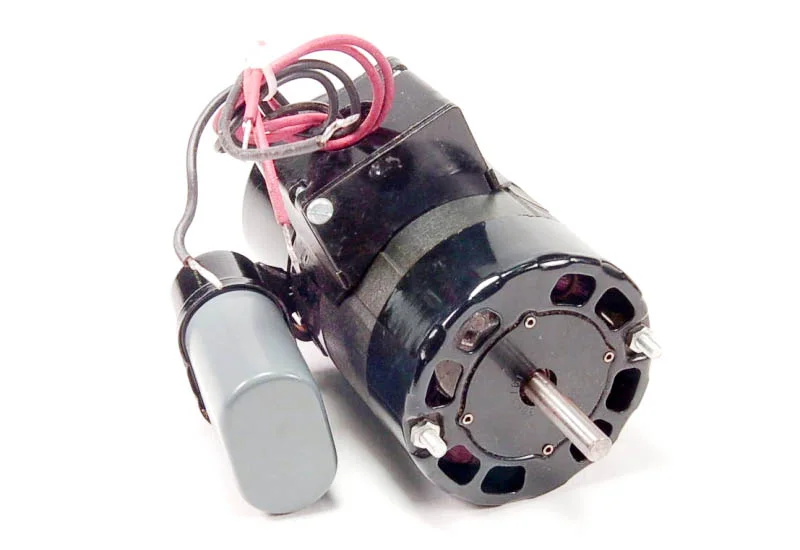
What is a Permanent Split Capacitor?
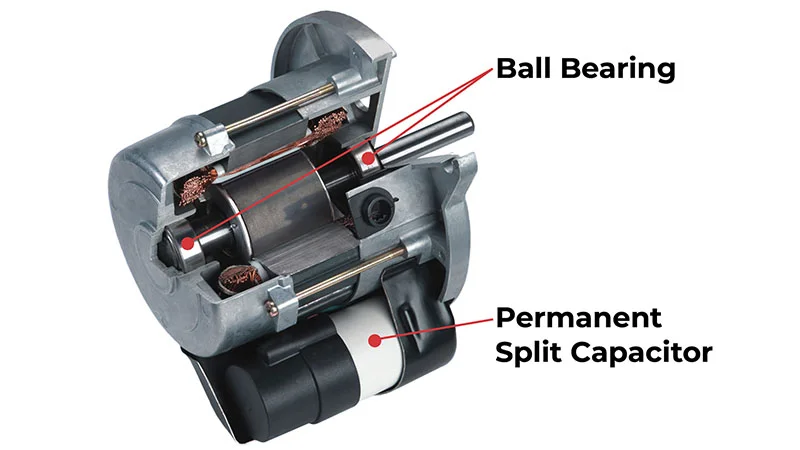
The term “permanent split capacitor” refers to the motor’s design, which includes a capacitor connected in series with the auxiliary winding. Unlike some other types of single-phase motors that require a starting capacitor which is disconnected once the motor reaches a certain speed, in a PSC motor, the capacitor remains in the circuit during both starting and running modes.
what does a permanent split capacitor mean?
A Permanent Split Capacitor (PSC) motor features a capacitor that remains connected in the circuit both during starting and running. This design improves efficiency and performance, making PSC motors reliable for continuous-duty applications such as fans, blowers, and pumps. The “permanent” aspect refers to the capacitor’s continuous role, unlike start capacitors that disconnect after startup.
Permanent Split Capacitor Technical Specifications
Basic Design
Rotor and Stator Configuration:
The rotor is typically squirrel-cage type, and the stator has distributed windings.
Capacitor Details:
Uses a run capacitor permanently connected in series with the start winding, enhancing efficiency and power factor.
Voltage and Current Ratings:
Standard ratings vary based on application needs, generally ranging from 115V to 230V for residential and commercial uses.
Electrical Characteristics
Inductance and Capacitance Values:
Key parameters affecting performance.
Power Factor:
PSC motors generally offer a high power factor, improving overall energy efficiency.
Efficiency Ratings:
Typically between 60-70%, making them suitable for continuous duty applications.
Mechanical Aspects
Bearing Types:
Commonly use ball or sleeve bearings depending on the application.
Cooling Mechanisms:
Often feature external fans for cooling to maintain optimal operating temperatures.
Mounting Options:
Various mounting styles are available, including foot and flange mountings.
permanent split capacitor wiring diagram
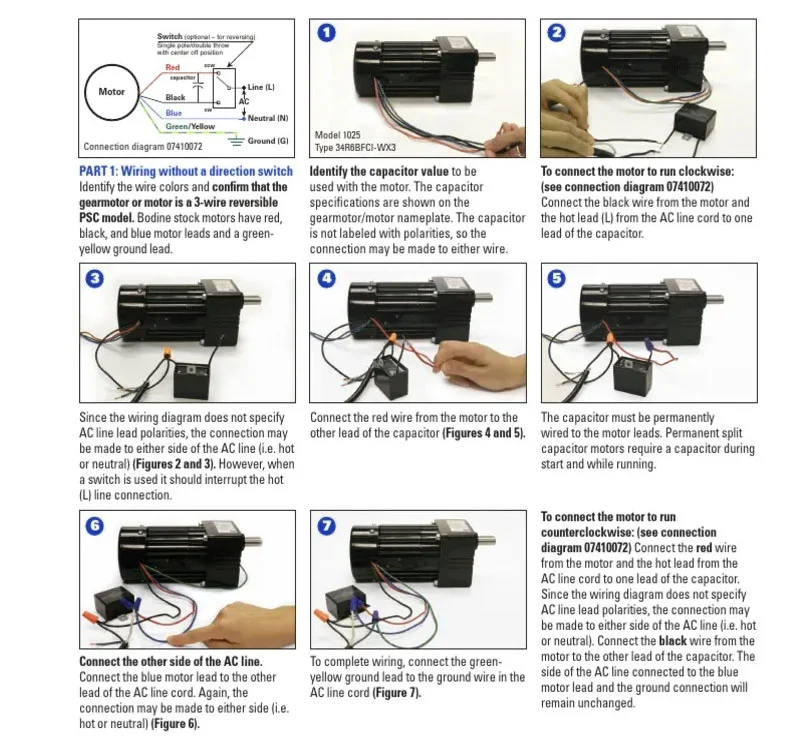
Permanent Split Capacitor Applications
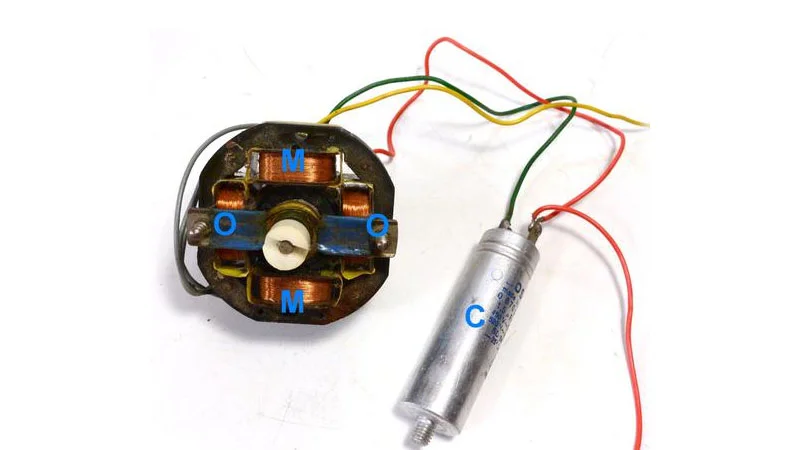
HVAC Systems
Blowers and Fans:
Used extensively in air handling units for their reliability and efficiency.
Compressors:
Essential for the operation of HVAC compressors, providing consistent performance.
Home Appliances
Washing Machines:
Provide the torque needed for the agitator and spinning cycles.
Refrigerators:
Used in both compressors and fans to ensure efficient operation.
Industrial Machinery
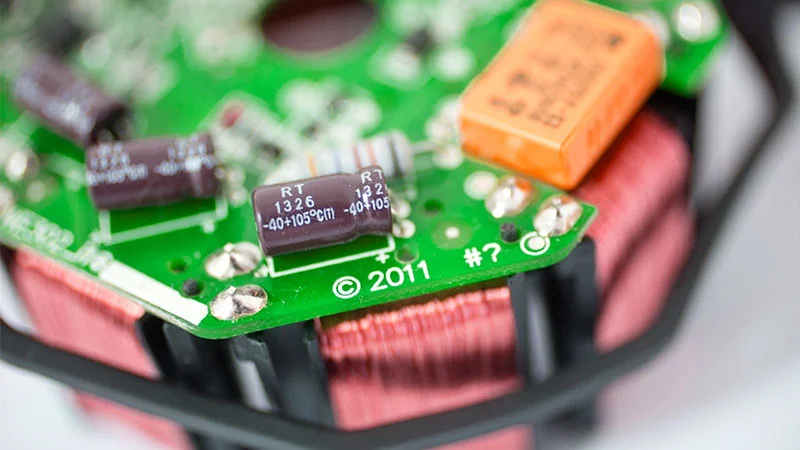
Pumps:
Commonly found in water pumps and sump pumps due to their continuous duty rating.
Conveyor Systems:
Drive motors in conveyor belts, ensuring smooth operation in manufacturing settings.
Permanent Split Capacitor Benefits
Energy Efficiency
High Power Factor:
Contributes to lower electricity consumption.
Continuous Duty:
Suitable for applications requiring prolonged operation without overheating.
Reliability
Minimal Maintenance:
Designed for long-term use with minimal need for intervention.
Durability:
Robust construction ensures longevity even in demanding environments.
Cost-Effectiveness
Lower Operating Costs:
Efficient design reduces energy bills.
Affordable Maintenance:
Simplified design makes repairs and maintenance more cost-effective.
Permanent Split Capacitor vs Split-Phase Motors vs Capacitor-Start Motors
| Aspect | PSC Motors | Split-Phase Motors | Capacitor-Start Motors |
|---|---|---|---|
| Efficiency | More efficient due to the run capacitor | Less efficient overall | Generally efficient during operation |
| Starting Torque | Moderate starting torque | Higher starting torque | High starting torque |
| Cost | Typically less expensive and simpler in design | Moderate cost | Generally more expensive |
| Application Suitability | Preferred for continuous duty applications (e.g., fans, blowers) | Suitable for applications needing higher starting torque (e.g., smaller pumps) | Better for high torque applications (e.g., compressors, heavy machinery) |
Permanent Split Capacitor Maintenance Tips
Regular Cleaning:
Keep the motor and its surroundings clean to prevent dust and debris buildup, which can affect cooling and lead to overheating.
Check Capacitor:
Periodically inspect the capacitor for any signs of bulging, leaking, or other damage. Faulty capacitors can cause motor inefficiency or failure.
Inspect Electrical Connections:
Ensure all electrical connections are tight and secure. Loose connections can lead to overheating and electrical problems.
Lubrication:
If the motor has lubrication points, follow the manufacturer’s recommendations for lubricating bearings or other moving parts.
Monitor Temperature:
Keep an eye on the motor’s operating temperature. Excessive heat can indicate issues with ventilation, overloading, or other problems.
FAQs
What is a Permanent Split Capacitor?
A Permanent Split Capacitor is a type of single-phase motor.
How does a Permanent Split Capacitor motor work?
The capacitor remains in the circuit during starting and running.
Why use a Permanent Split Capacitor motor?
It offers better efficiency and simpler design.
Where are Permanent Split Capacitor motors used?
They are used in fans, blowers, and pumps.
What are the benefits of Permanent Split Capacitor motors?
They are reliable, cost-effective, and efficient.
How to maintain a Permanent Split Capacitor motor?
Perform regular inspections, cleaning, and lubrication.
Can a Permanent Split Capacitor fail?
Yes, usually due to capacitor or bearing issues.
What makes Permanent Split Capacitor motors efficient?
The continuous capacitor connection improves efficiency.
Conclusion
In conclusion, a Permanent Split Capacitor is a versatile and efficient type of single-phase motor. With its unique design featuring a capacitor connected in series, it offers improved performance and reliability in various applications. What is a Permanent Split Capacitor remains a question often asked by those seeking reliable and cost-effective motor solutions.
From HVAC systems to appliances, its widespread use highlights its importance in modern industrial and residential settings.